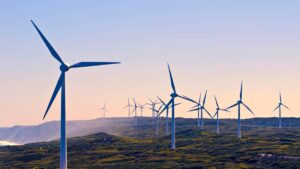Power Up: Are we back to staring at the abyss of US$100 oil?

Oil is heading up to US$100, but its stay there might be limited. Pic: via Getty Images
The benchmark Brent crude oil price has been steadily rising for the past month or so and is now marching towards that US$100 per barrel mark that economists get all antsy about.
While there’s still some ways to go (Brent is currently trading at US$93.05/bbl), Dutch multinational banking and financial services company ING Bank has forecast that prices will climb above the US$100/bbl mark in the “not-too-distant future” if OPEC+ maintains its supply cuts.
It noted – to no surprise at all to Power Up – that markets have tightened considerably due to production cuts by Saudi Arabia and Russia and that the current deficit of more than 2 million barrels per day would persist through to the end of this year.
However, ING noted that US$100/bbl crude oil is not sustainable due not only to growing political pressure but also due to Saudi and broader OPEC concerns about demand destruction.
Oil is fuelling much gnashing of teeth
The last time that crude oil broke through the US$100/bbl mark was back in late February 2022 and that was fuelled by Russia’s invasion of Ukraine.
It was also accompanied by European gas prices rising into the stratosphere, which really served to bring energy security to the forefront.
This time, the price rise is fuelled by output cuts rather than an invasion, but the timing is still terrible from a consumer’s perspective, coming as it does when inflation continues to be a sore point globally.
And it is likely to cause much distress as higher crude prices equates to higher energy and transport costs, which will in turn raise prices even higher.
There is a silver lining, though
Take prices up too high and the impacts will cause a reaction against the use of oil, which will serve to destroy demand in the commodity.
And all that will do is drive the world further into the arms of renewables and energy storage – cue lithium miners rubbing their hands together with glee.
That’s pretty much the last thing that OPEC+ wants and it is something you can be sure they are keeping a close eye on.
Renewables marching on
On the topic of renewables, it turns out that power generation from rooftop solar as well as large-scale solar and wind are continuing to make headway in Australia.
Data from the National Electricity Market showed that for a brief shining period, green energy contributed a record 70.6% of electricity supply for Australia’s east coast on Wednesday.
Over here in the West, rooftop and distributed solar peaked at a record 2 gigawatts on the state’s South West Interconnected System on Sunday.
Whilst these are impressive achievements in their own right, we are still a long way from achieving the 2030 target of 82% renewables averaged over a year.
It will take a lot more green generation capacity and storage to get us anywhere near that point, particularly as nightfall will see generation fall away rapidly, requiring either storage to hold the fort or for fossil fuels – particularly gas – to step in.
Concerns have already been raised that without a lot more support and introduction of new renewable generation and storage, Australia simply would not be able to meet its goals.
Still, getting to 70% even for a brief time shows that we are certainly making progress, we just have to redouble our efforts.
Related Topics

UNLOCK INSIGHTS
Discover the untold stories of emerging ASX stocks.
Daily news and expert analysis, it's free to subscribe.
By proceeding, you confirm you understand that we handle personal information in accordance with our Privacy Policy.








